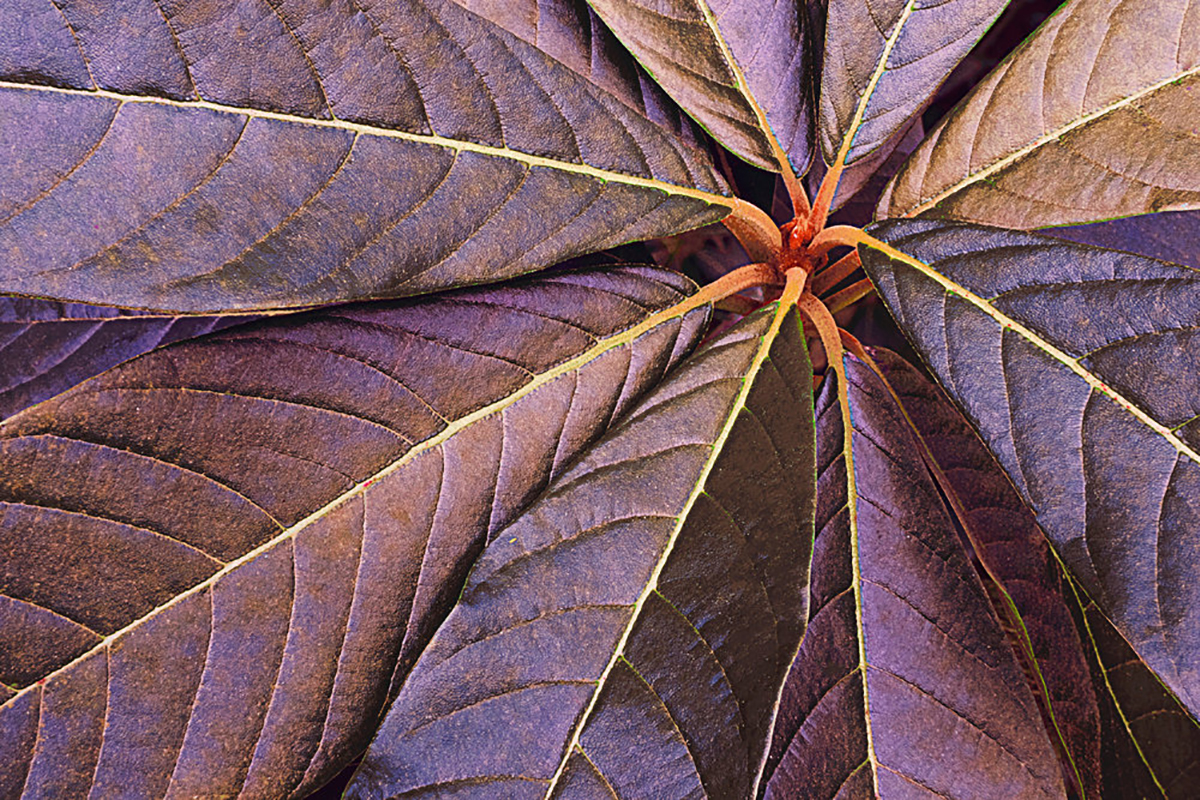Finding Character
Mike Moats seeks out each plant and flower’s uniqueness with his Tamron 18-300mm VC VXD all-in-one zoom.
Share the article:
More Photo Tips | Video Gallery | Photo Gallery | Enewsletter sign-up
By Jenn Gidman
Images by Mike Moats
During the pandemic, Mike Moats, like many photographers, found himself with much more time stuck at home than he was used to. “I had to cancel three conferences and my workshops, so much of what I’d had planned,” he says. “But my saving grace was that I’d started an online macro club four years ago, so I used this forced downtime to recruit as many people as I could to sign up.” The club now has nearly 3,000 members in 28 countries, with more than 250 instructional macro videos in various categories.
As pandemic restrictions have eased, Mike, who hails from Sterling, Michigan, has once against started his outdoor wanderings, including during a February trip to Florida, where he visited the Marie Selby Botanical Gardens in Sarasota, as well as the Bok Towers Gardens in Lake Wales, about two hours northeast. On this excursion, Mike brought along his Tamron 18-300mm VC VXD all-in-one lens, which allowed him to zoom in on all of the flora’s intricacies to create his version of artistic close-ups.
“I’m not technically a macro photographer, because macro photographers are shooting at 1:1 or higher magnifications,” Mike says. “The vast majority of what I do is close-up photography, which means I can use a lens like the 18-300mm with its 1:2 maximum magnification rate and a close range of just a couple of inches. I wasn’t terribly familiar with mirrorless camera systems, but people were starting to attend my workshops with them, so I bought a Fuji camera to get a feel for it, and it’s working really, really well with that 18-300. The images coming out of it are spectacular.”
When wandering the botanical gardens, or any outdoor area with the eye-catching subjects he seeks, Mike looks for patterns, colors, and contrast. “Anytime I spot a plant with starkly defined lines, for instance, I have to take a picture of it,” he says. “Many of my images end up with the subject filling the frame, so that the viewer can focus completely on the most compelling parts of the plant or flower being photographed.”
Adding texture to backgrounds is what Mike has been experimenting with of late. “I bring my own backgrounds when I visit botanical gardens like the ones in Florida and place them right behind the plants if they’re not already up against one I like,” he says. “If you don’t use a solid-colored background, you’ll often get a lot of clutter in the back, which can be distracting, and it can be difficult to clean up later. Then, after capture, while I’ll sometimes leave the background as is, I also have a filter editor I use with thousands of filters to create texture and add more visual interest to the photo.”
Read on to see how Mike has been using the 18-300mm for some of his recent up-close art.
IMAGE 1 (0008; swirly purple nautilus shell)
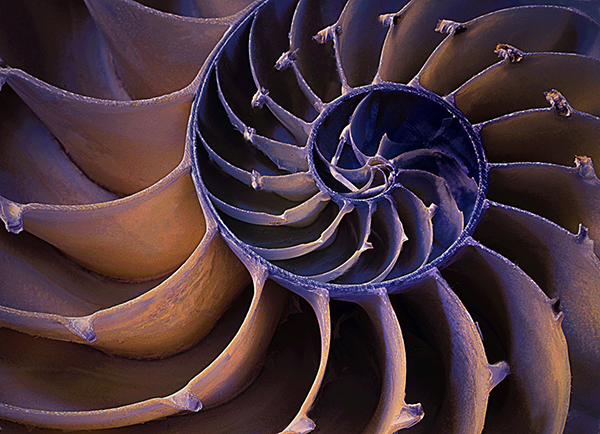
18-300mm (55mm), F/22, 5.3 sec., ISO 400
Click image to view larger
This is a nautilus shell, sliced in half so you can see inside. I collect them for my workshops, specifically so people can photograph them. I used an LED light for this photo to sidelight the shell, with the light coming in from an angle rather than beaming straight down onto it. That helped create some of the darker shadows you see. I’ll use higher f-stops when I take a picture of something like this, because when you’re shooting really close, your depth-of-field shrinks. And these types of subjects have a lot of depth to them, so I need to use those larger f-stops to get everything in focus the way I want.
IMAGE 2 (6640; B&W palm)
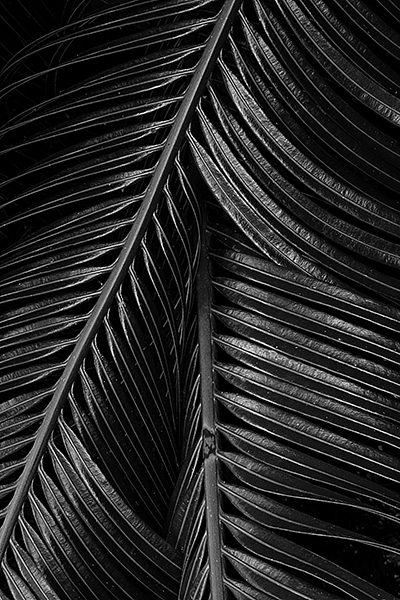
18-300mm (100mm), F/36, 0.4 sec., ISO 2000
Click image to view larger
Most palms are situated side by side, with not much interaction. For this black-and-white photo of a palm tree, however, I liked the way the two sections meshed together. I call it “finding character”—looking for something a little bit different that’s going on with a plant or flower than what you’d usually see. I also appreciated the way the light was hitting some areas, while others remained shaded and shadowed. Those factors made this an ideal photo to convert to black and white, to emphasize those elements.
IMAGE 3 (1944; palm with somewhat colorful stems)
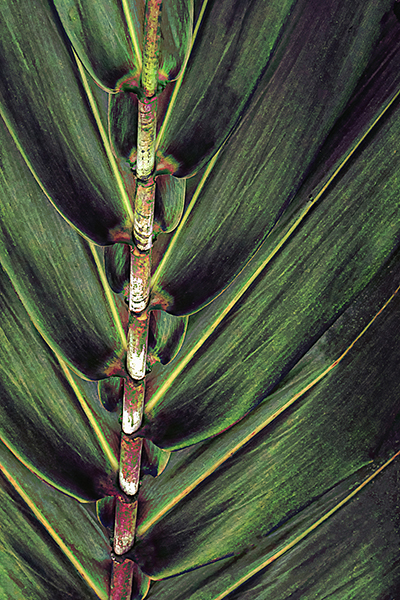
18-300mm (117mm), F/36, 1/28 sec., ISO 2000
Click image to view larger
Sometimes a plant’s unique colors or patterns will catch my eye. That’s what happened in this photo, with the stem you see here. This is a much different palm tree than others I’d come across; the colors of the stem drew me in. I tried to create an aesthetically appealing composition, with that hard line in position on the left third of the frame, with the flow of the leaves pulling the viewer’s eye upward.
IMAGE 4 (6641; palm with leaves radiating out)
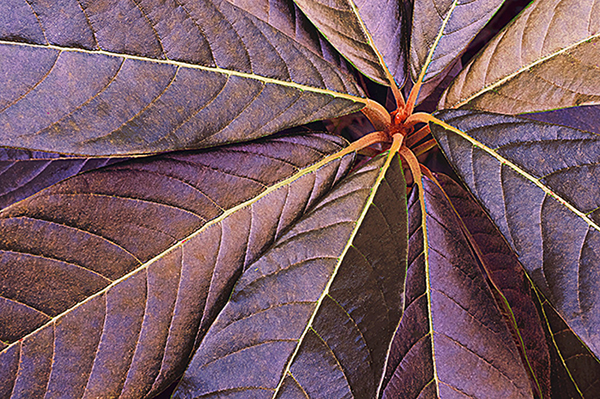
18-300mm (34mm), F/25, 1/14 sec., ISO 2000
Click image to view larger
Much of that color in these palm fronds was added in post-processing, using a filter. I thought it looked better than the original. And if you notice the central area where all the stems are radiating out of, in the upper right corner—in the rule of thirds, this is what I call using two of the thirds. You’re using a line of the top third, and a line of the right, and placing your subject where those thirds run into each other. Some people call it the power point, some people call it the golden rule. I also like the strong contrast I was able to highlight, with those light-colored veins against the darker color of the leaves, and all of the smaller lines coming off the main line.
IMAGE 5 (6643; pinkish-purple plant)
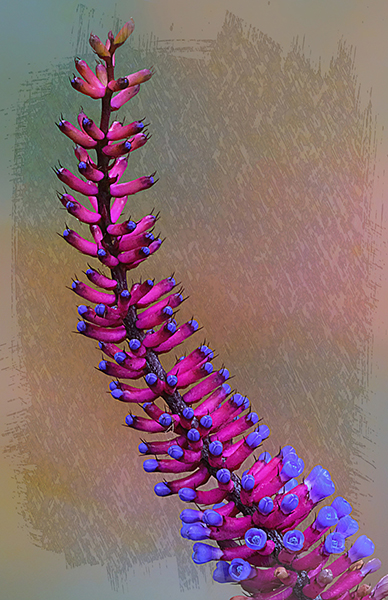
18-300mm (80mm), F/32, 1/45 sec., ISO 2000
Click image to view larger
I captured this image at Bok Towers, and I had a background behind it that was a solid neutral stone shade, with very slight tinges of color woven in. But this was one of those instances where I felt like it needed a little something more, so I used the filter to create more texture to make the plant pop.
IMAGE 6 (0254; weird-looking plant with things sticking out of it)
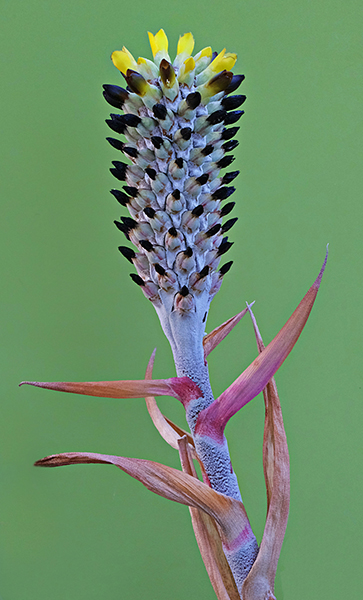
18-300mm (100mm), F/29, 1/26 sec., ISO 2000
Click image to view larger
Sometimes I choose not to add texture to my backgrounds, so I don’t take too much away from the subject. I like to keep an eye out for plants and flowers I’ve never seen before, and this plant in the Selby gardens qualifies. I can’t even tell you what it is. In this case, the solid green background contrasts well with the colors of the stem and the leaves at the bottom, as well as with those tiny yellow buds at the top of the flower.
IMAGE 7 (0193; yellow orchids w/red stripes)
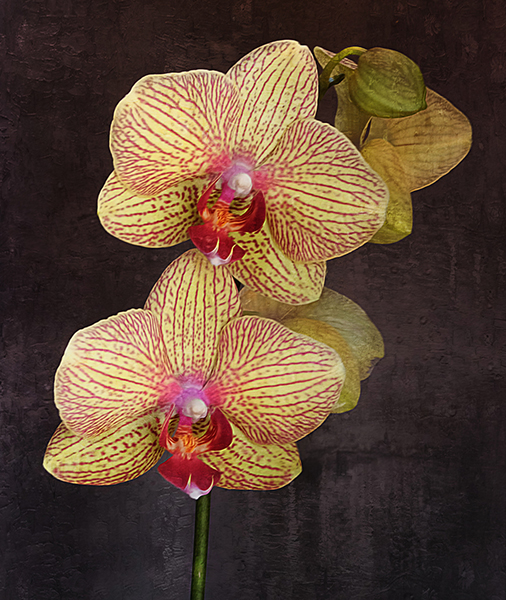
18-300mm (42mm), F/22, 1/5 sec., ISO 2000
Click image to view larger
These orchids were part of a display, set in recessed windows in a long wall, with dark backgrounds already in place to serve as a perfect contrast to the yellow flowers, and the beautiful veining throughout the petals. All I had to do was set up and shoot. I took many photos of the different samples, but I liked this one in particular because of that tiny bud that hadn’t yet opened in the upper right. It adds to the story of the image.
IMAGE 8 (0273; dead milkweed against tree bark)
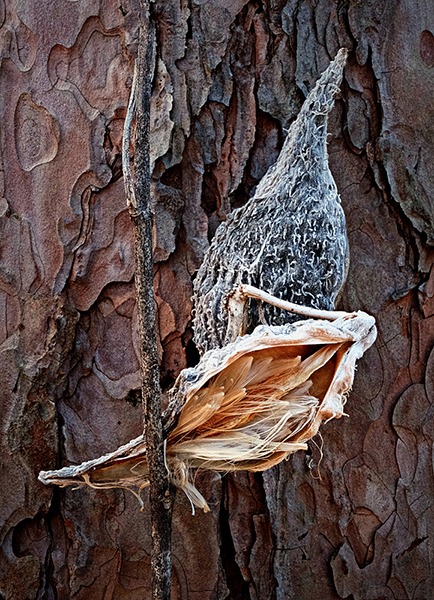
18-300mm (52mm), F/22, 1/25 sec., ISO 2000
Click image to view larger
I’d stumbled across a large area where these milkweed pods were all lying on the ground, after the winter winds and snow had knocked them down. I picked this one up—I liked that it had burst open, so you could see the hairs inside that help disperse the seeds—and wedged it onto a pine tree so I could use the texture of the bark as my background. In the colder months, you have to get creative outside, because there’s not much that’s living to shoot. You can find interesting designs and patterns in dead plants like this. An artist will appreciate all the textures and contrast, even if it’s not as traditionally “pretty” as living subjects.
IMAGE 9 (0289; stem with green buds)
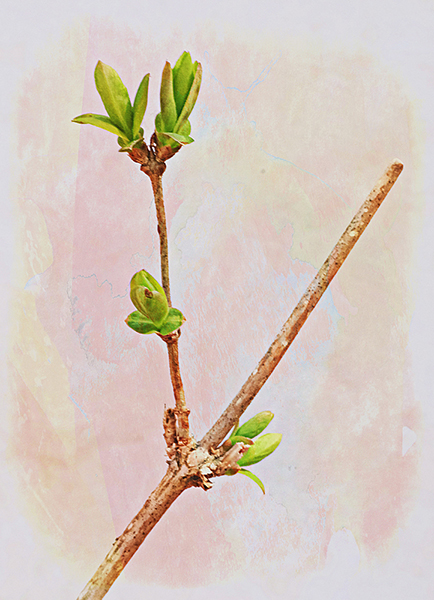
18-300mm (42mm), F/25, 1/9 sec., ISO 2000
Click image to view larger
I shot this the same morning as I shot the milkweed pod. There were very few things popping out of the ground yet, meaning no green anywhere. So when I was taking pictures of the milkweed pod and spotted this bush with tiny green buds, it was a harbinger of spring. There was more of a solid background behind it, so I then added one of my texture filters to make the image a little more artistic.
To see more of Mike Moats’ work, check out his website and Instagram. For more on Mike’s macro photo club, click here: www.tinylandscapes.com/macro-photo-club.
More Photo Tips | Watch Videos | Learn More About Tamron Lenses | Photo Gallery
